Japanese Music and Washing Dishes
Posted Oct 31, 2023
Tags: music, japan, routine
For the last 5 years, my morning routine has been pretty much the same – wake up, stumble into the kitchen, set the water in a stove top kettle, groggily clean my french press and then wash all dishes from the previous night while waiting for the water to boil. Once that happens, brew a coffee and then walk over to my desk with it. It was a fairly robust system; the kettle and the stove were inefficient, which gave me enough time to get through previous days’ dishes. I’ve stuck to it through all the other changes in life.
And then in May this year, I bought an electric kettle.
This new electric kettle, designed by George Sowden to look pretty, boils water in 3 minutes - leaving barely enough time for me to clean out my french press and add fresh coffee grounds to it. As a result, the daily washing of dishes got moved to late nights and has since become the core of my bedtime routine. Unlike the groggy mornings when I’m mostly inattentive, I began listening to music as I washed dishes in the night.

Having spent the prior weeks in Europe, I felt an odd combination of the fatigue from relentless travel, and the need to escape a cultural context that seemed to follow me wherever I went. I had been casually exploring Japanese music up until then, but this feeling and the newfound dishwashing ritual proved to be the right impetuses for me to dive into it.
At first, I needed to go through youtube explainers, reddit threads and list posts, but from there it was pretty straightforward in terms of finding music from Japan. I sought to avoid the more prominent acts, such as from the world of city pop, anime soundtracks and math rock. With time I began recognizing familiar names among the members of bands I hadn’t heard before, which became a meaningful thread to follow.
I discovered a ton of artists in the process, like Serani Poji, Masakatsu Takagi, Sketch Show, Taeko Onuki, Ichiko Aoba, Jiro Inagaki and Fishmans. I learned about the early concerns of cultural appropriation with singing Japanese lyrics over rock’n’roll music, the many side projects of Ryuchi Sakamoto, and the urban hyperpop-esque Shibuya Kei movement at the turn of the millennium.
The following is a list of artists that I caught burrowing into my consciousness with time. I don’t know how popular any of these artists are, and how they’re viewed in the discourse; in a way I appreciate the cultural detachment with which I can appreciate the music. This list is my attempt to document what has been a rewarding foray into a musical culture that I have little to no background on.
Cornelius
I’m not sure what to categorize music from Cornelius under; a lot of it could be filed under shoegaze, some under math rock, trip hop or even straight up punk. The closest I can get to finding a counterpart in the west is in Beck. Cornelius is the pseudonym of producer Keigo Oyamada, known more prominently as a pioneering artist of the Shibuya Kei scene. It’s easy to see why; a lot of his early work is incredibly scatterbrained and draws from a vast source of influences, hopping genres several times in the span of an album while retaining a sense of lo-fi urgency. Fantasma (1998) is a great example of this, and embraces the incoherence by splicing tape edits, CD skips and radio static between tracks, almost as if to suggest that the chaos is a feature in a world of random-access memories.

I got really hooked on his production technique, and have spent weeks trying to imitate it at rehearsals and jam sessions. The sample-heavy style, even in the context of traditional arrangements, feels oddly amenable to live coding. His treatment of vocals in several of the tracks stood out to me as well – in “Typewriter Lesson”, speech samples are curated and layered a la Boards of Canada; and in “Breezin’”, vocal phrases are heavily syncopated and add nuance to the rhythm. Other tracks like “Omstart” use vocals as a traditional centerpiece, while “Beep It” uses a monotone, speech-like GPS voice.
Happy End
I’m very tempted to call Happy End Japan’s response to The Beatles and Beach Boys, but their sensibilities are closer to progressive and avant-garde European acts from the latter portion of that decade. Consisting of Haruomi Hosono, Eiichi Ohtaki, Takashi Matsumoto and Shigeru Suzuki, the band only released 3 albums in their 4-year tenure before disbanding. The members continued to collaborate, but focused on solo projects. Most prominently, Haruomi Hosono went on to join Ryuchi Sakamoto on Yellow Magic Orchestra and Sketch Show. I spent a lot of time following Hosono’s solo work as well, some of which are fascinating while others utterly deranged as far as the music goes.
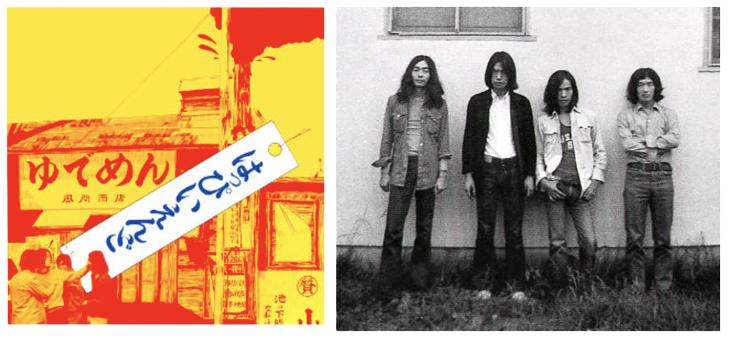
The first self-titled Happy End album borrows a lot from the latter era Beatles (White Album / Let It Be). This album is probably my favorite, given its richness in both instrumentals and vocal production. There are portions of this album that come very close to sounding like Serge Gainsbourg with its delicate grooves and atmosphere. "Kakurenbo" (かくれんぼ, "Hide-and-seek"), and "Tobenai Sora" (飛べない空, "Unflyable Sky") are instant favorites.
The second album is significantly more folk, while their final album (also self-titled) returns to older arrangements enmeshed with funk and soul, perhaps as a result of the band’s time in the US.
Perfume
Perfume is far from the kind of band or artist I’m known to get into. Their music is energetic, glassy and exciting. Nearly every song is a neat, sound-designed four-on-the-floor with synth arpeggios and vocal harmonies – all driven by the producer Yasutaka Nakata. I can see how Perfume fits in the cultural history of J-pop and K-pop, with their catchy melodies, the dance moves, commercial licensing and glitzy visual personae. Often described as “technopop” or “future pop”, some songs feel like an odd cross between mid-2000s Ibiza trance and an upbeat Bollywood number, with a hint of Daft Punk-esque robot vocals. It reeled me in.

I really enjoyed their 2008 album GAME, which was on repeat several nights and found its way into my commute playlists. I drew a lot from it for an Algorave set I played in August (people danced to my set!). “Macaroni” has an irresistible groove, and so does the sharp and sophisticated “Take Me Take Me”. “Butterfly” and “Chocolate Disco” are easy dancefloor hits.
Rei Harakami
I found little online about Rei Harakami online besides a sparse Wikipedia page. The words I would use to describe music from Rei Harakami are “lush” and “playful”. In contrast to the club-forward electronica of Perfume, Harakami’s beats are introspective and clearly a bedroom production. It wouldn’t be absurd to claim that he draws from a lineage of reclusive electronic producers of the likes of Aphex Twin and Burial, but there is a distinct wistfulness to his music. Needless to say, this aesthetic fits rather conveniently with what I like, and my late-night dishwashing routine.
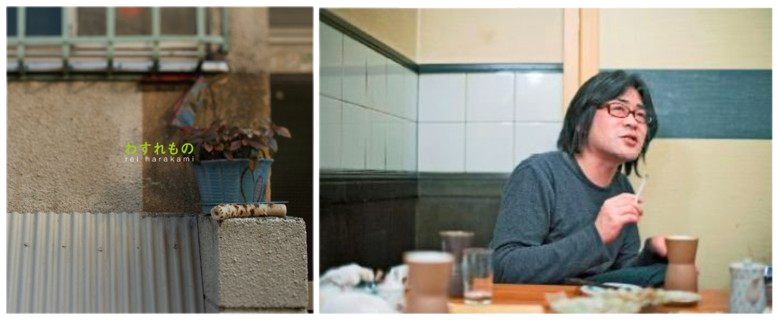
I’ve listened to his 2006 album “wasuremono”(わすれもの) many a summer night as the tap in my kitchen sink emptied itself of all the warm water from the pipe and treated me with refreshing cold water for the rinsing of the final fork. I keep going back to “itoguchi”(いとぐち) and “machibuse”(まちぶせ), two songs with interesting use of glissando as a method of emphasizing groove. Later in the album, “mebae”(めばえ) offers a nice callback to this idea.
ASA CHANG and Junray
ASA-CHANG & Junray is an experimental electronic band from the 90s, consisting of percussionist ASA CHANG, with tabla player U-zhaan and guitarist/programmer Hidehiko Urayama. Urayama rarely ever performs in person, and instead contributes via a portable hardware-based sample trigger system (often dubbed “Jun-Ray Tronics” or “Junray box”) that responds to the percussion hits from the other two members on stage. Their current iteration has taken on slightly different arrangements with a violinist and flutist onboard.
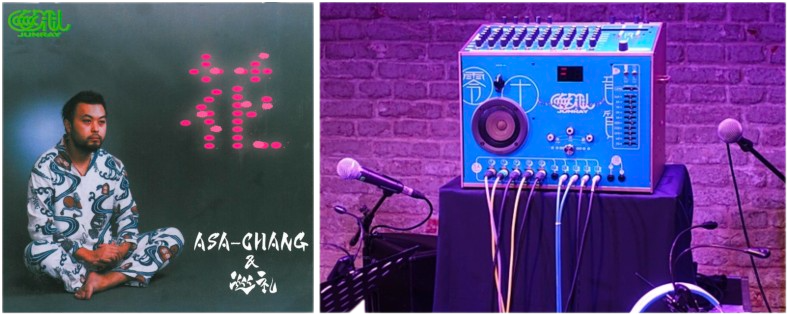
My gateway into this band was via their 2001 album Hana, which employs the Junray box to trigger sequential speech samples in synchrony with a tabla player. The monophthongs of Japanese speech map so elegantly over the tabla rhythms, often sounding like rhythm solfege. I’ve spent the last several months obsessing over algorithmic manipulation of human voice and sound samples in my own music, so this album really hit the spot for me. The familiar Indian sounds are a cherry on top. This album also features a lot of sampling, chopped up to align with the tabla sections in a lehra-like fashion. The title track “Hana” and “Nigatu” are my favorites from the album.
Tujiko Noriko
Noriko’s music is the kind that I have generally been drawn to for the better part of the last decade. I discovered her music via her collaboration with Aoki Takamasa on the 2005 album “28”, but grew really fond of From Tokyo To Naiagara (2004). This album very much places her in the early 2000s era of indie electronic music, with a lot of influence from IDM and trip hop coupled with vocal arrangements similar to that of Vespertine-era Bjork.
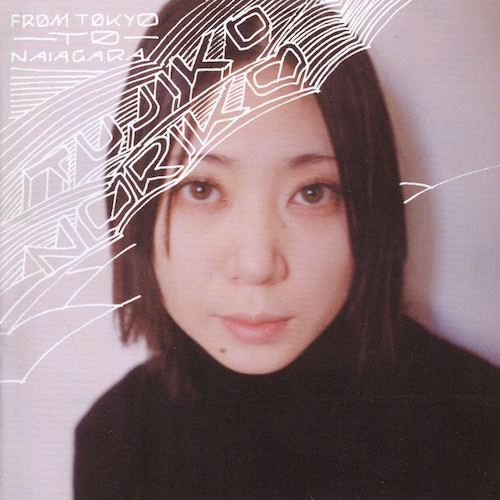
That said, it is interesting to hear her voice change and evolve over the course of her discography, both as a function of her growth as an artist and the change in influences. Her film soundtracks are more ambient and drone-forward in contrast to her rhythmically intense albums. My favorite tracks so far are “Narita Made” (I really wish I could cover this track), “Doki Doki Last Night”, “26th Floor” and “Tablet For Memory”. Her lyrics are in English and Japanese. I haven’t gleaned much in the way of themes from her music, though I sense a poignancy in the songs.
Minami Deutsch
Minami Deutsch is a Japanese krautrock band, so it checks all the boxes as far as my favorite music goes – relentless beats, odd-time signatures, melodic bass lines and textured guitar. Krautrock has always been a source of relaxation for me with its hypnotic and meditative energy, and in that respect Minami Deutsch fully delivers.
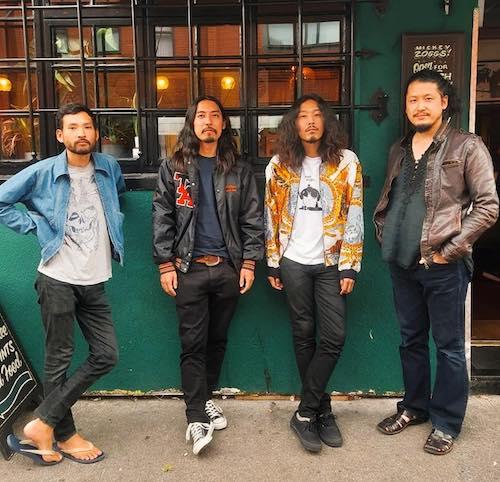
I spent time with their two recent albums, Fortune Goodies (2022) and With Dim Light (2018). The former departs from their krautrock roots more into psychedelia (think of a sophisticated, meditative King Gizzard) while the latter is straight up motorik beats with simple arrangements. The influence of CAN, Faust and newer krautrock revival acts like Beak> from the west is undeniable. “I’ve Seen a UFO” is a great example of everything I like about this band and so is the acoustic track “Bitter Moon”, with its solemn arpeggios not unlike slower Faust tracks. “Grumpy Joa” leans deeper into the psychedelic/math rock side of the band.
**
We are well into the fall now; the temperatures are nicer and the sun no longer sets at egregious hours. I continue to wash dishes every night and put some of these albums on from time to time. I’ve come to appreciate the simple coziness of all this newfound music from a country I’ve never been to, and the sweet spot it occupies in my head between familiar and alien.
Here's a Spotify playlist with all the tracks I've mentioned in the post.
Previous
← On Traveling